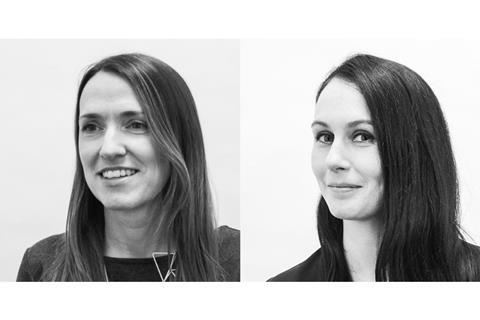In the face of a changing environment, economy and society, the ways in which we used to approach design won’t solve tomorrow’s problems

The design decisions of today will form the foundation of a sustainable future, determining the health and wellbeing of both our planet and its people.
For organisations operating in this space, embracing change is the only sure path to future financial viability, to meet the growing demands and expectations of end-users, clients and regulators.
If we’re to deliver projects against a uniquely tough, complex and pressured environment, innovation is a necessity.
However, the reality is that our industry is often risk-averse. Traditional, tried and tested methodologies leave little room for exploration beyond the immediate needs of a client.
Yet we’re increasingly aware that change is required to build thriving, healthy places - for us, our communities and our environment. The science of building is no longer the preserve of architects and designers; it’s influenced by behavioural psychology, data scientists and anthropologists.
Our research & innovation (R&I) unit is made up of a team of 15, all committed to tackling systemic challenges, embedding innovation and drilling deeper into how to deliver better construction techniques and outcomes.
For that evolution of design to succeed, it’s important to integrate digital expertise, design research, and environmental analysis capabilities across the design business.
It’s about bringing specialist skills to specific design projects - to meet certain complexities, extract more insightful data or to build shared knowledge between diverse stakeholders.
You also need to work across disciplines to address common challenges, such as exploring the barriers and catalysts for modern methods of construction (MMC), deploying digital design tools to better engage with pupils and staff in designing Special Educational Needs school environments for example, or developing data-driven insights into the user experience at railway stations.
Finally, new ways of working need to be embedded into established project and design processes. So from the early stages of design projects, we can interweave innovations to drive efficiency and sustainability outcomes, and from inception reviews to design challenge days, it’s possible to transform best practice into day-to-day practice.
If we’re to deliver projects against a uniquely tough, complex and pressured environment, innovation is a necessity.
None of this is possible without a multidisciplinary approach that challenges knowledge silos. In our complex modern world, it’s more important than ever to nurture pan-disciplinary teams, who are the key to fostering inclusive, supportive and sustainable growth in multidimensional ecosystems, built on understanding the human experience.
We’re currently working with our Landscape Design team and the City of London to embed microclimate analysis and environmental sensors in the Barbican Podium Refurbishment project, bringing the latest software and environmental metrics to analyse the combined environmental effects on human comfort levels. The result is a detailed understanding of microclimate and human experience factored into the design processes.
However, there’s still work to do to recognise the value of cross-fertilised skill sets. Although the benefits of diversity are becoming more visible, traditional methodologies of project delivery don’t yet reflect the need from industry and young professionals for blended career paths.
Through advances in automation, access to a growing range of datasets, and increasingly powerful tools to manipulate data, digital technology is also energising transformation.
The impact of digital is not its replacement of people’s expertise, but in improving our ways of working, making us more collaborative, transparent and seamless.
Our Urban Community Index, for instance, is an initiative we conceived and delivered to improve local authorities’ geographic and demographic understanding of their urban ecosystems through data. We can now map and evaluate urban environments to identify opportunities for interventions to improve the health, equity and resilience of these communities. For example, we can assess the relationships between access to local amenities, local employment hubs, and local demographics to identify the most impactful areas for urban planning interventions.
These are tough, important questions, and we must embrace digital tools to help us solve them. Yet for design to evolve at scale, we also need to develop effective methods for sharing our answers. Our R&I unit is connected to an external network that reaches across our industry, global business and academia – a reach that has enabled us to participate in a range of partnerships.
The next two decades promise an enormous degree of change. Whether we’re focused on a low-carbon future, thriving places or healthier communities, the status quo won’t cut it anymore. We must focus on making evidence-driven, credible cases for change - experimenting, finding and delivering insights that will inform more sustainable, forward-thinking processes.
Ultimately, that’s what will power real transformation. For now, that means more research and innovation.
Postscript
Caroline Paradise is head of research and innovation at Atkins and Ruth Hynes is associate design researcher at Atkins
















No comments yet